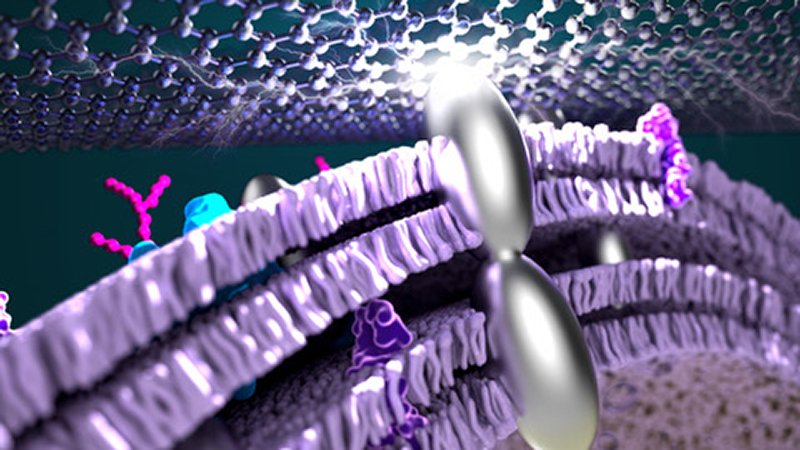A team of engineers and chemists from UCLA has achieved significant progress in the development of microbial fuel cells. This is a technology that employs natural bacteria to extract electrons from organic matter in wastewater to produce electrical currents.
 Artist’s image of a microbial fuel cell with efficiencies boosted by silver nanoparticles. Image Credit: AKang, Sphere Studio, Copyright @ Yu Huang and Xiangfeng Duan.
Artist’s image of a microbial fuel cell with efficiencies boosted by silver nanoparticles. Image Credit: AKang, Sphere Studio, Copyright @ Yu Huang and Xiangfeng Duan.
The study was published in the journal Science.
Living energy-recovery systems utilizing bacteria found in wastewater offer a one-two punch for environmental sustainability efforts. The natural populations of bacteria can help decontaminate groundwater by breaking down harmful chemical compounds. Now, our research also shows a practical way to harness renewable energy from this process.
Yu Huang, Study Co-Corresponding Author, Professor and Chair, Materials Science and Engineering Department, UCLA Samueli School of Engineering
The researchers targeted the bacteria genus Shewanella, which is extensively researched for its energy generation capabilities. They are capable of growing and thriving in all types of environments, such as soil, wastewater and seawater, irrespective of the oxygen levels.
The Shewanella species are capable of naturally disintegrating organic waste matter into smaller molecules. Electrons are obtained as a byproduct of this metabolic process. Some of these electrons can be captured when the bacteria grow on electrodes as films. This forms a microbial fuel cell that generates electricity.
The microbial fuel cells powered by Shewanella oneidensis have previously not captured sufficient currents from the bacteria to render the technology viable for industrial use. Some electrons are capable of moving fast enough to escape the bacteria’s membrane and enter the electrodes to offer enough electrical currents and power.
To overcome this problem, the researchers introduced silver nanoparticles to electrodes that are formed of a kind of graphene oxide. The silver ions released by the nanoparticles are reduced to silver nanoparticles using electrons produced from their metabolic process. These are then included in their cells.
After entering the bacteria, the silver particles act as microscopic transmission wires, capable of capturing more electrons generated by the bacteria.
Adding the silver nanoparticles into the bacteria is like creating a dedicated express lane for electrons, which enabled us to extract more electrons and at faster speeds.
Xiangfeng Duan, Study Corresponding Author and Professor of Chemistry and Biochemistry, UCLA Samueli School of Engineering
With significantly enhanced transport efficiency, the resulting silver-infused Shewanella film outputs more than 80% of the metabolic electrons to an external circuit. Thus, it produces a power of 0.66 milliwatts per square centimeter, which is more than twice the previous best for microbial-based fuel cells.
The study, supported by the Office of Naval Research, used the increased current and enhanced efficiencies to present that fuel cells powered by silver-Shewanella hybrid bacteria may open doors for sufficient power generation in practical settings.
Bocheng Cao, a UCLA doctoral student guided by both Huang and Duan, is the first author of the paper. Other UCLA senior authors are Gerard Wong, a professor of bioengineering; Paul Weiss, a UC Presidential Chair and distinguished professor of chemistry and biochemistry, bioengineering, and materials science and engineering; and Chong Liu, an assistant professor of chemistry and biochemistry. Kenneth Nealson, a professor emeritus of earth sciences at USC, is also a senior author.
Duan, Huang, and Weiss are all members of the California NanoSystems Institute at UCLA.
Journal Reference:
Cao, B., et al. (2021) Silver nanoparticles boost charge-extraction efficiency in Shewanella microbial fuel cells. Science. doi.org/10.1126/science.abf3427.